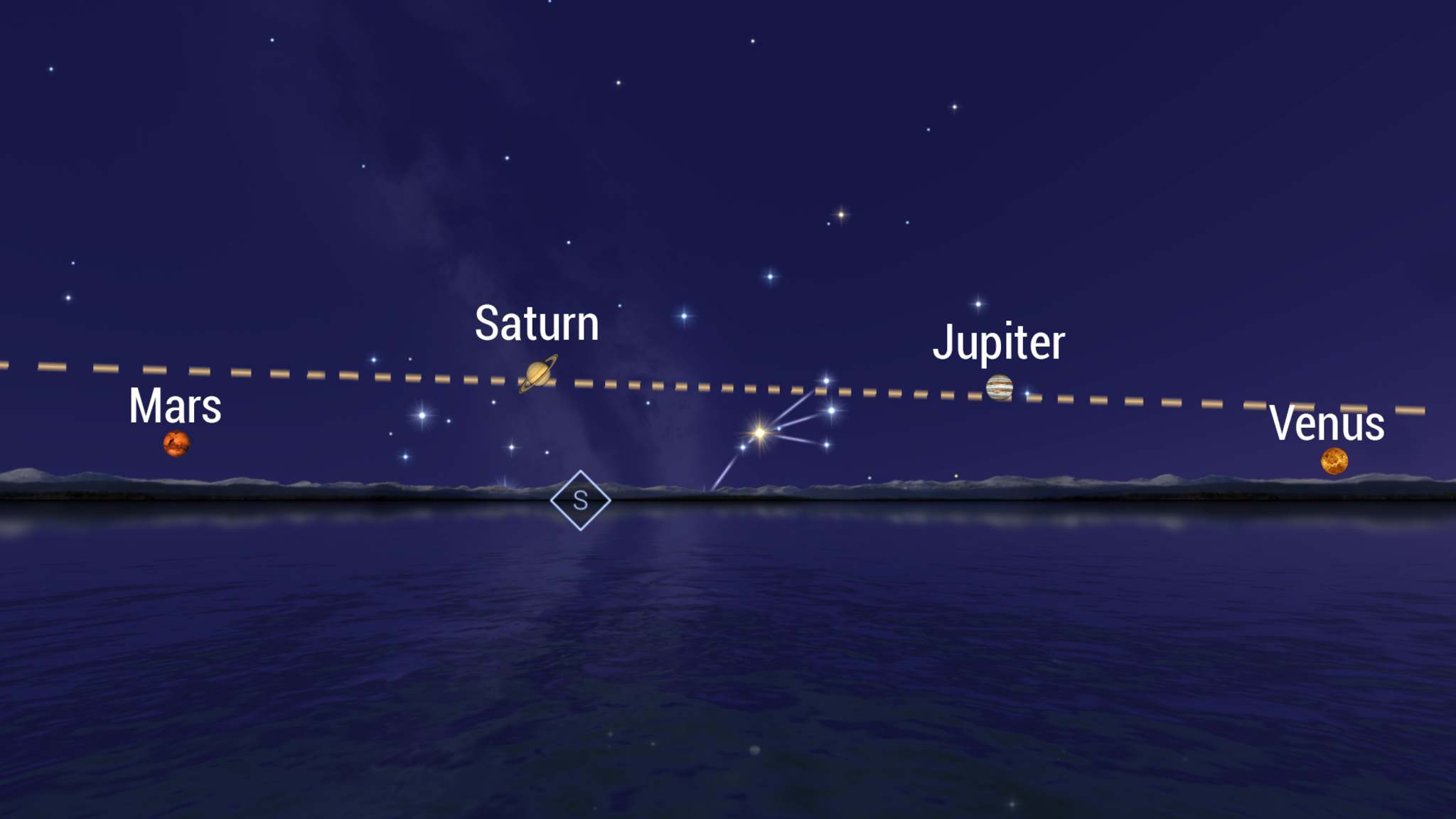Parade of Planets
This weekend the early evening sky, at 9 p.m. local time, contains a parade of planets that connect the dots along our solar system’s plane. Venus sets first, followed by Jupiter. Saturn and Mars remain in sight for much of the night.
Extremely bright Venus is quickly descending the western early evening sky each evening as its orbit carries it back towards the sun. This week, it will set shortly before 9 p.m. local time. During the past few weeks, the bright planet has been approaching the bright star Spica in Virgo. The effect is caused by the Earth’s motion, carrying the entire sky westward faster than Venus is moving. The planet will also be growing larger in apparent diameter because it is travelling towards the Earth right now.
We are in the closing chapter for observing Jupiter this year. The earlier sunsets will buy us some extra evening observing time, but its position low in the sky will add a great deal of extra blurring atmosphere between it and our telescopes. This week, the very bright planet will emerge from the southwestern twilight soon after dusk, and then set in the west-southwest just after 10 pm local time.
Medium-bright and yellow-tinted Saturn will appear not too high up the darkening southern sky shortly after dusk this week. The planet will reach its highest elevation of about 2 fist diameters above the southern horizon at around 8:40 pm local time, and then descend to set in the west by about 1 am. This summer, the ringed planet has been 5 finger widths to the upper right of the “lid” star of the Teapot in Sagittarius. As the sky darkens, even a small telescope should be able to show you some of Saturn’s larger moons, especially Titan. Using a clock’s dial analogy, Titan will move counter-clockwise this week from a position at 8 o’clock (left of the planet) to 3 o’clock (right of the planet). (Remember that your telescope might flip and/or invert the view. Use the moon to find out how your telescope changes things.)
Mars will still be very bright this week. Visually, it will appear pink or orangey due to the global dust storm it has experienced recently. Mars will appear above the southeastern horizon after dusk and then climb higher until 10:30 pm local time, when it will reach an elevation of about 20° (or two outstretched fist diameters) above the southern horizon. (That will be the best hour to view the planet in a telescope because it will then be shining through the least amount of Earth’s distorting atmosphere.) Note that 20° is lower than many trees and buildings, so a clear southern vista is essential. It will set in the west before 3 am.
